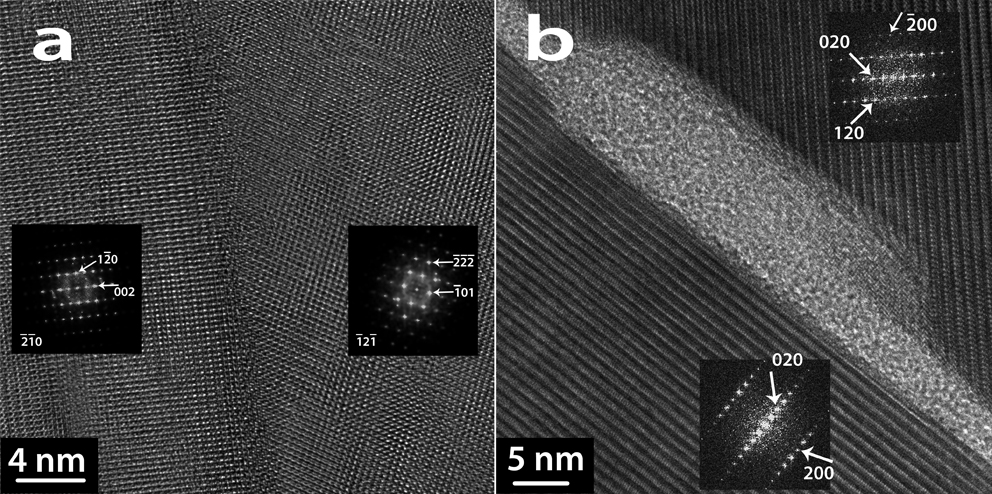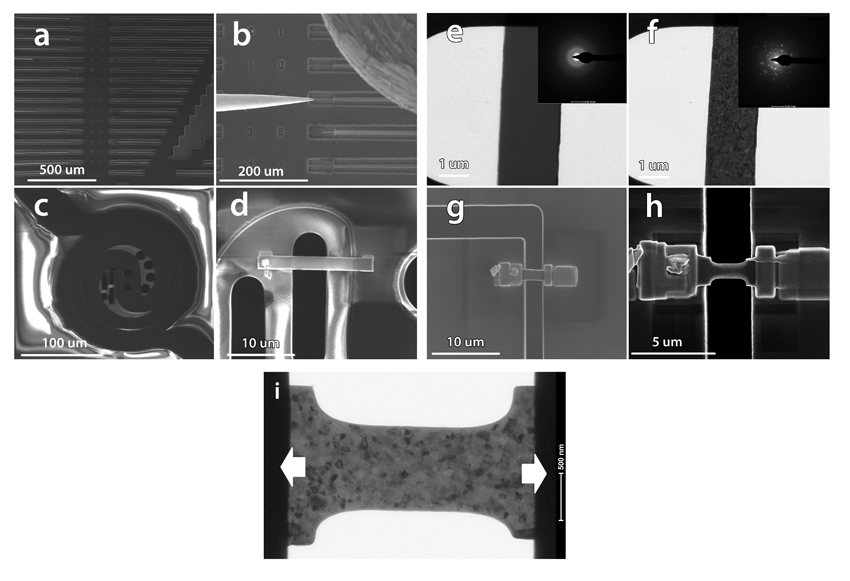A new deformation mechanism in Olivine? Ex-situ and in-situ TEM studies.
- Abstract number
- 673
- Event
- European Microscopy Congress 2020
- DOI
- 10.22443/rms.emc2020.673
- Corresponding Email
- [email protected]
- Session
- PSA.6 - Geological Materials & Bio-mineral systems
- Authors
- Dr. Vahid Samaee (2), Mr. Ihtasham Ul Haq (2), Prof. Patrick Cordier (3, 4), Dr. Gunnar Lumbeeck (2), Prof. Dominique Schryvers (2), Prof. Hosni Idrissi (1, 2)
- Affiliations
-
1. Université Catholique de Louvain
2. University of Antwerp
3. University of Lille
4. Institut Universitaire de France
- Keywords
grain boundary sliding, in-situ tensile test, olivine, PTP,
- Abstract text
Olivine is a silicate with orthorhombic symmetry and (Mg,Fe)2SiO4 composition which is the dominant phase of the Earth’s mantle down to 410 km depth. There is evidence that in the convective mantle, olivine deformation involves dislocation glide and climb. However, due to its low symmetry, this mineral does not possess enough slip systems to satisfy the Von Mises criterion. Several recent studies have focused on the possible contribution of grain boundaries (sliding, migration) to the deformation of olivine aggregates, but so far, the mechanisms at play are not clarified.
To study the deformation mechanisms, deformed synthesized olivine samples, obtained from mixed, cold pressed and sintered SiO2 and Mg(OH) powders, were used for ex-situ TEM investigations. Deformation was carried out using a Paterson press (high-pressure high-temperature deformation apparatus) under a confining pressure of 300±5 MPa, at temperatures between 900 and 1200 °C, and at a constant displacement rate [1,2]. The detailed HRTEM microstructural investigation revealed evidence of ductile behavior of GBs facilitated by intergranular amorphous layers, as shown in Figure 1.
Figure 1 HRTEM images from GBs in (a) the pristine sample (before deformation) and (b) the deformed sample at 1200°C.
In order to study this mechanism further, we use the PI-95 TEM Picoindenter holder and the Push-to-Pull (PTP) device (Bruker.Inc) to perform quantitative in-situ TEM tensile tests [3]. The deformation of ultra-fine grain materials represents an opportunity to enhance grain boundary sliding (GBS) and in-situ nanomechanical testing in the TEM provides further opportunity to gain information on the acting mechanisms. To carry out this study, olivine aggregates with very small grains are needed that are not available in nature. Here we start from free standing beams of amorphous thin films of Mg2SiO4 forsterite (the Mg-rich end member of the olivine solid solution) deposited by pulsed laser deposition (PLD) and prepared by lithography. To crystallize olivine form the amorphous deposits, small beams were heat-treated in a DENSsolutions in-situ TEM heating holder. Heating up to 900°C induces crystallization of the thin films with a final grain size of the order of 100 nm. These crystallized beams were then mounted on the PTP devices and used for nanotensile testing. The first results confirm the GB sliding mechanism through the formation of an amorphous layer.
Figure 2 SEM images showing (a) free standing Olivine beams, (b) lifting step of an olivine beam, (c) DENSsolutions heating chip, and (d) the mounted beam on the heating chip. (e) and (f) TEM images and SAED pattern of the specimen before and after heat-treatment showing crystallization. SEM images showing (g) the mounted beam on a PTP device and (h) the final shape of the tensile test sample after tuning. (i) TEM image of the tensile sample.
- References
[1] J Gasc, S Demouchy, F Barou, S Koizumi and P. Cordier, Tectonophysics 761 (2019), p. 16.
[2] C Bollinger, K Marquardt and F Ferreira, Am. Mineral. 104 (2019), p. 220.
[3] V Samaeeaghmiyoni, H Idrissi, J Groten, R Schwaiger and D Schryvers, Micron 94 (2017), p. 66.
[4] The authors thank R Dohmen, S Demouchy, C Bollinger, J Gasc, S Koizumi and A Mussi for providing the various samples


